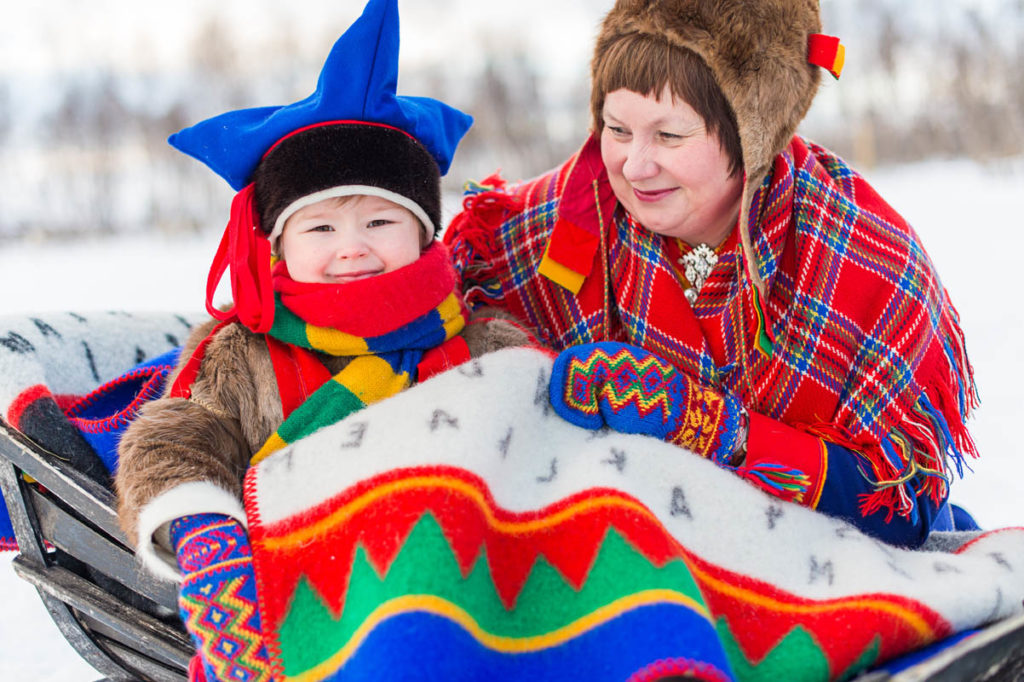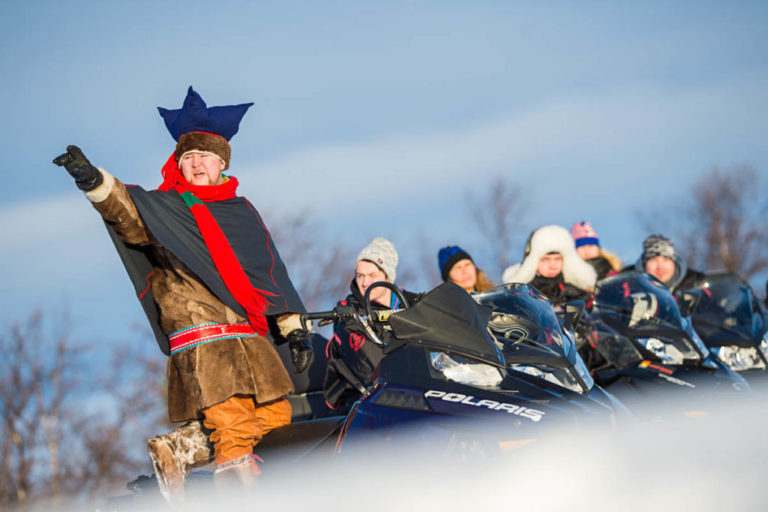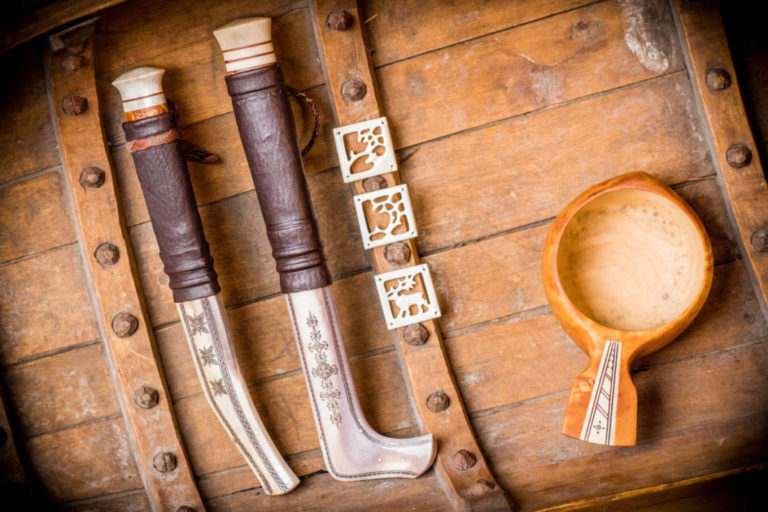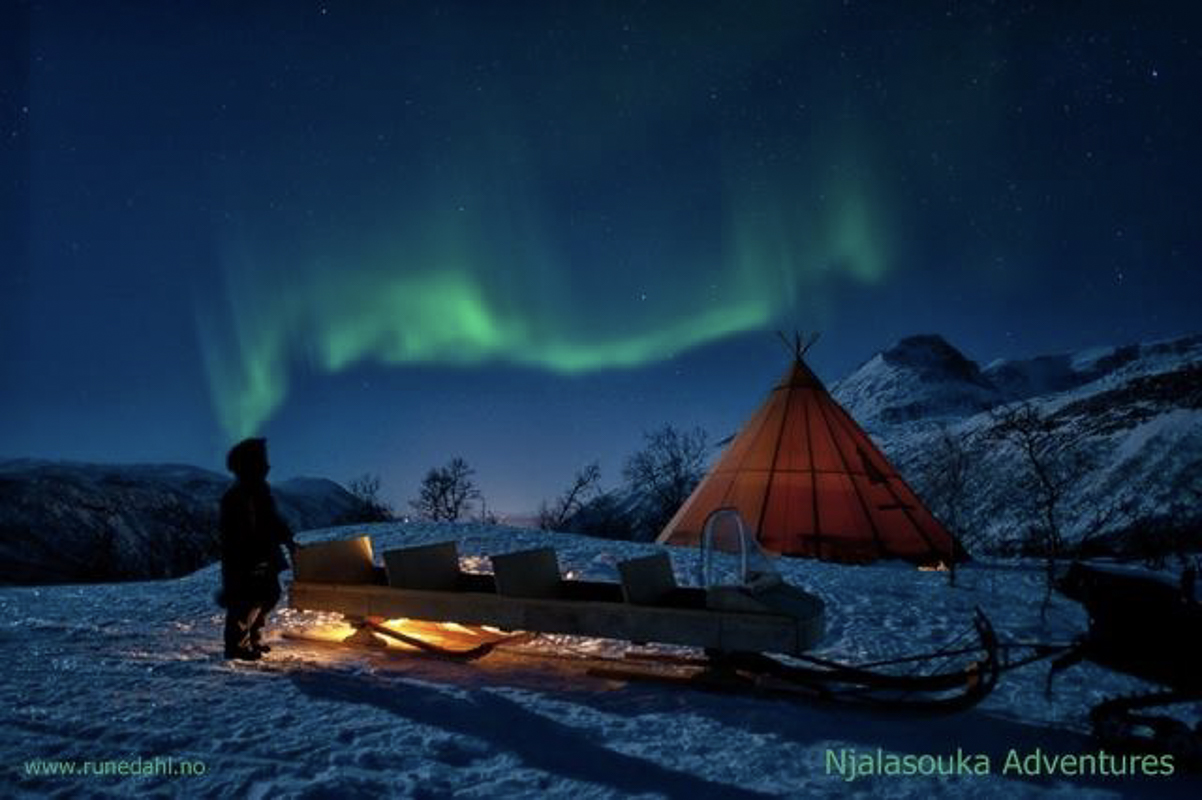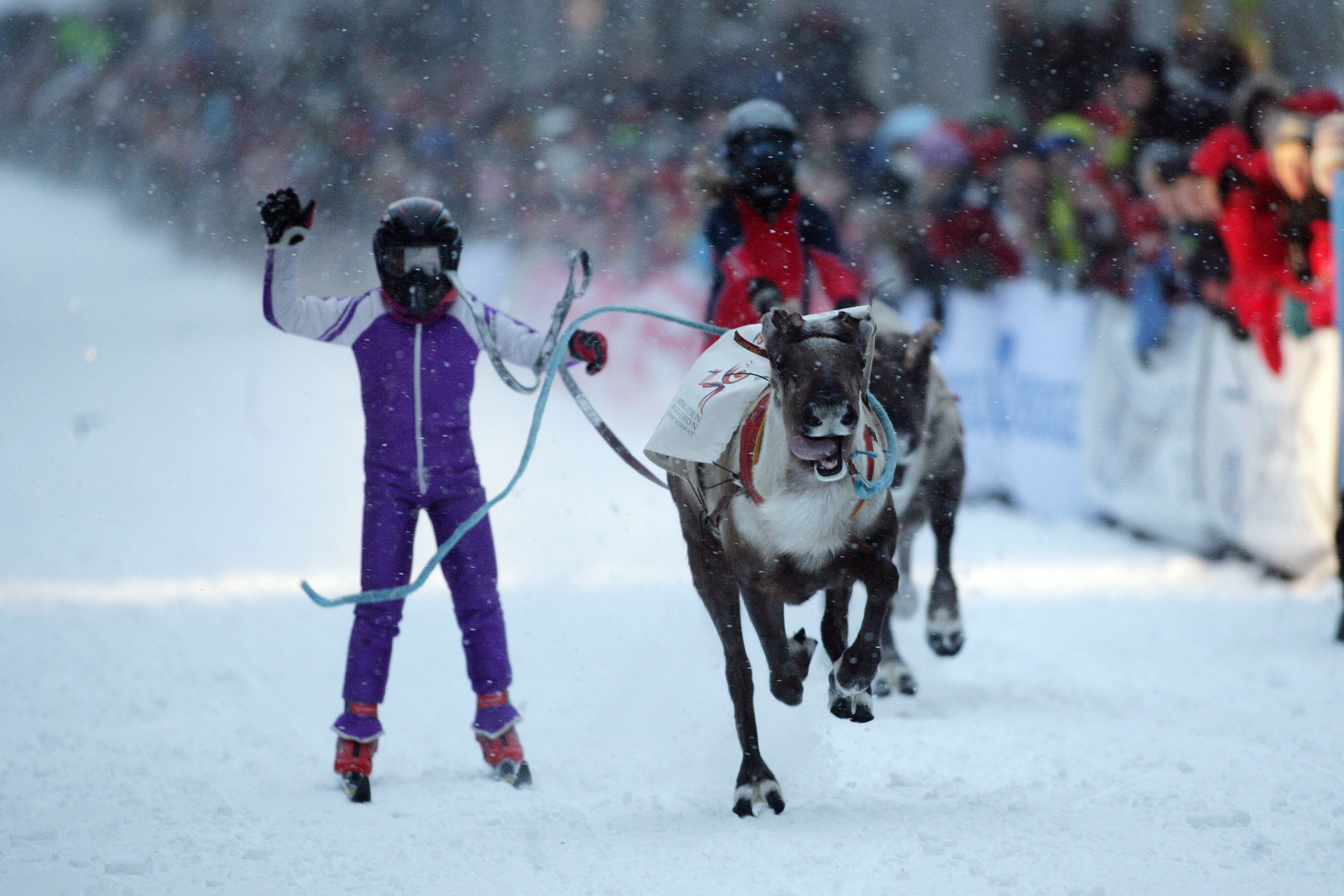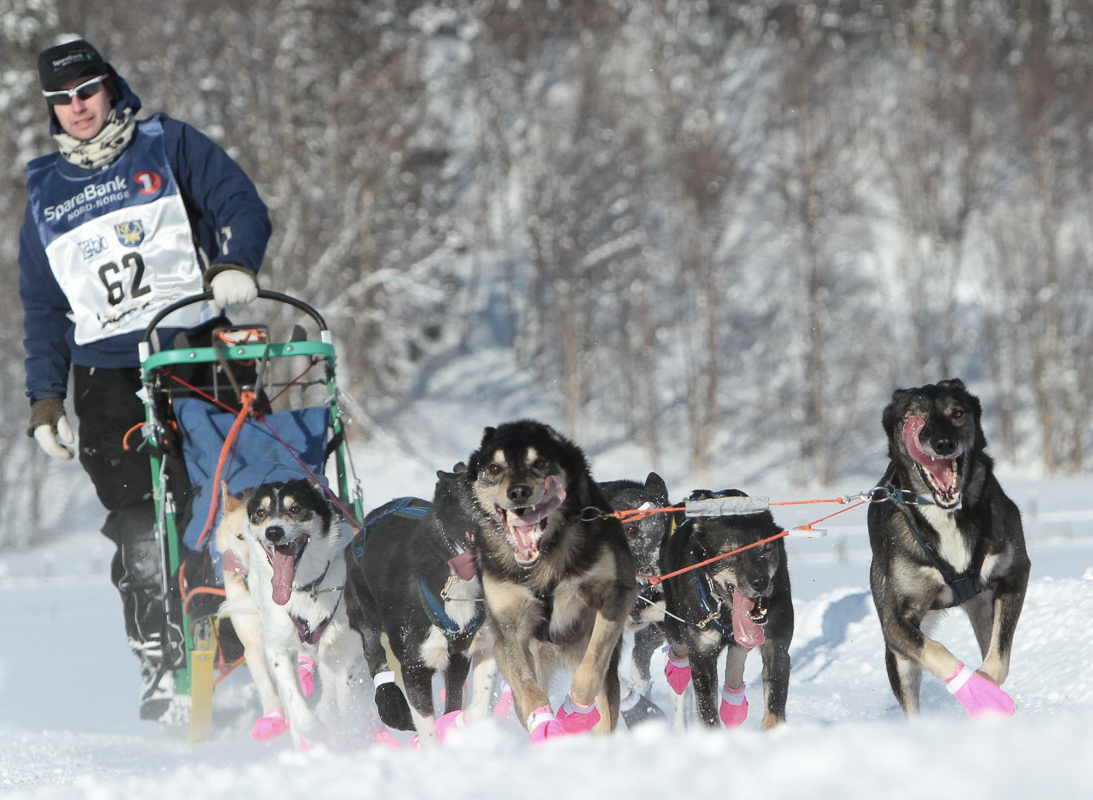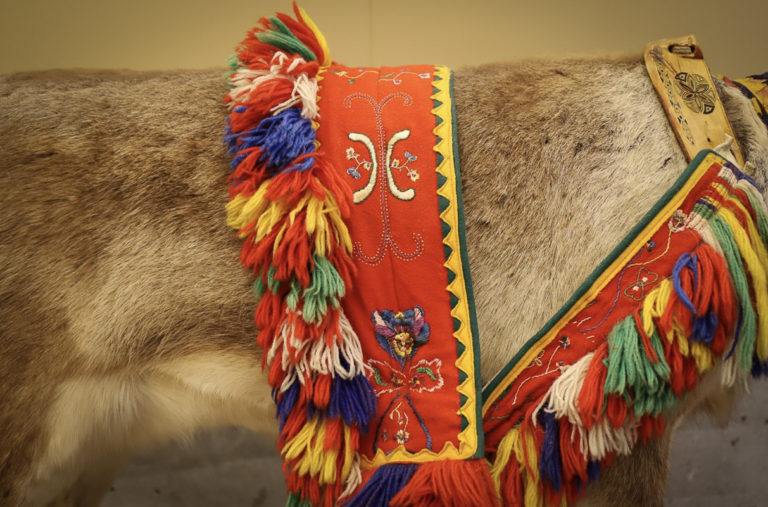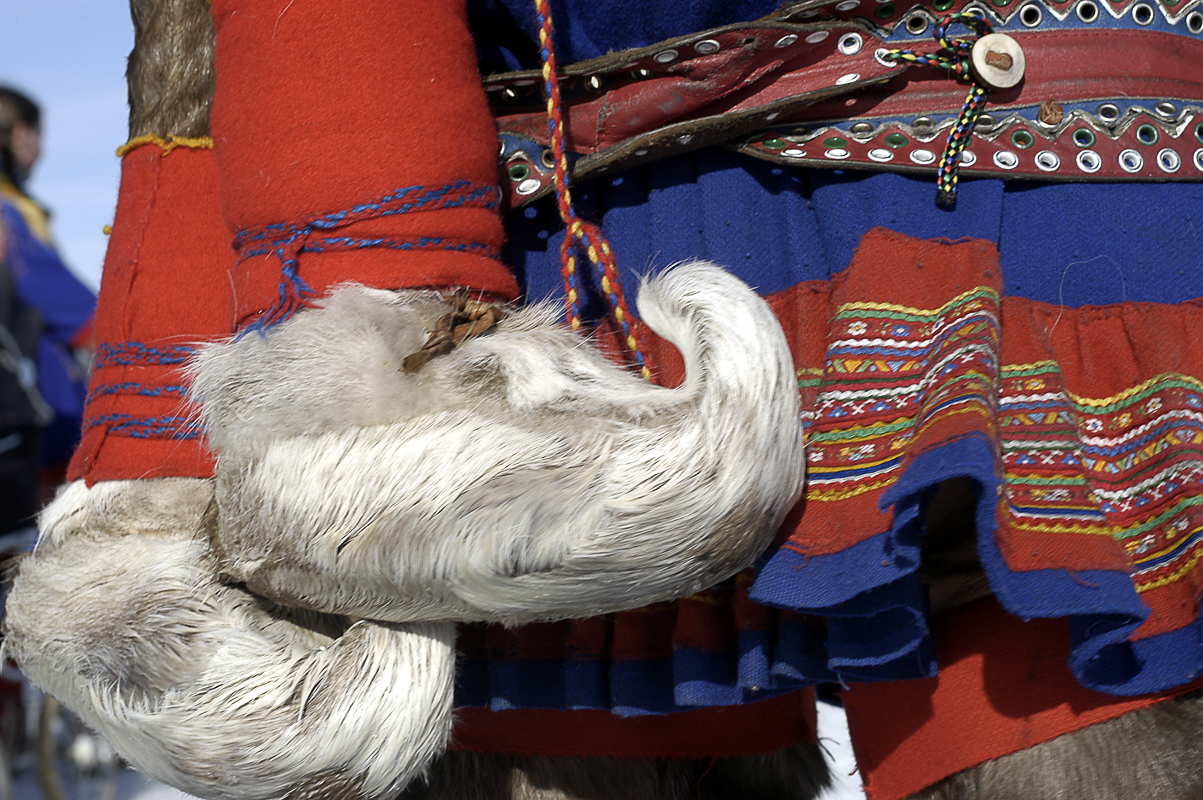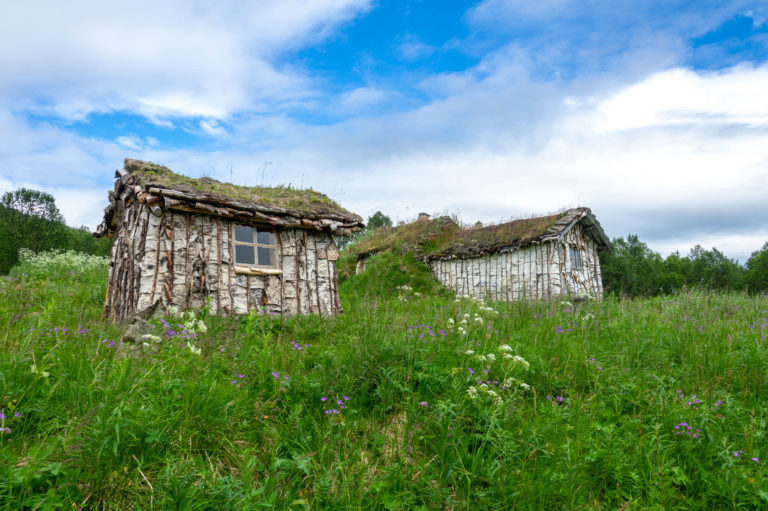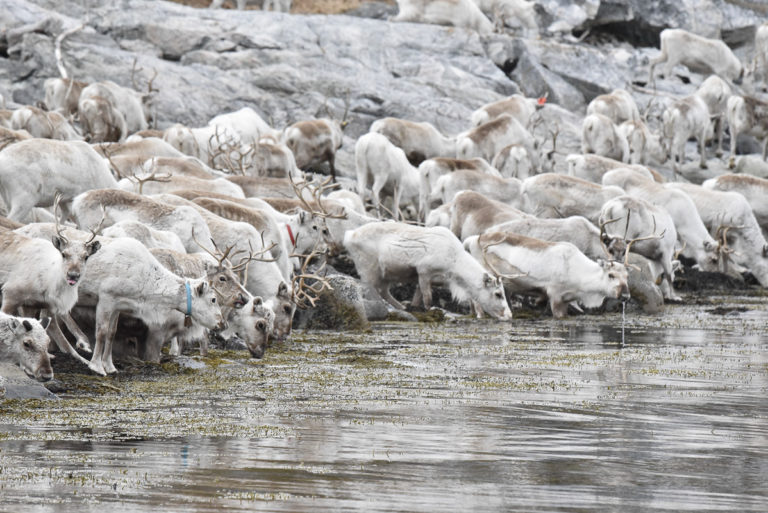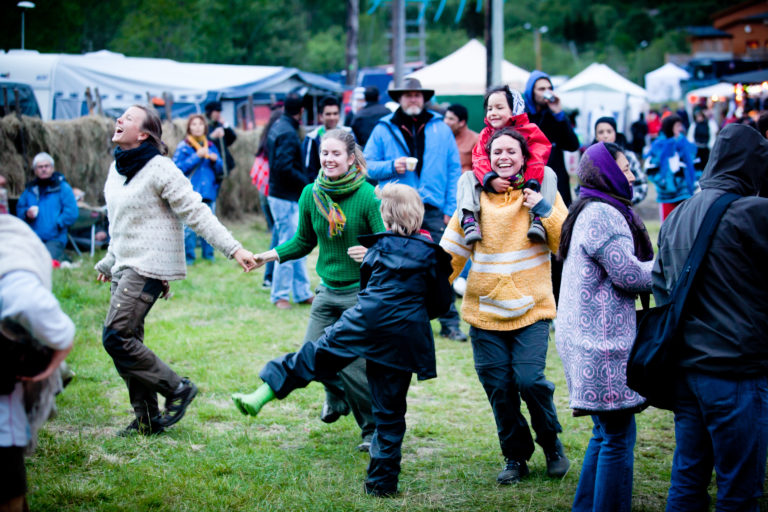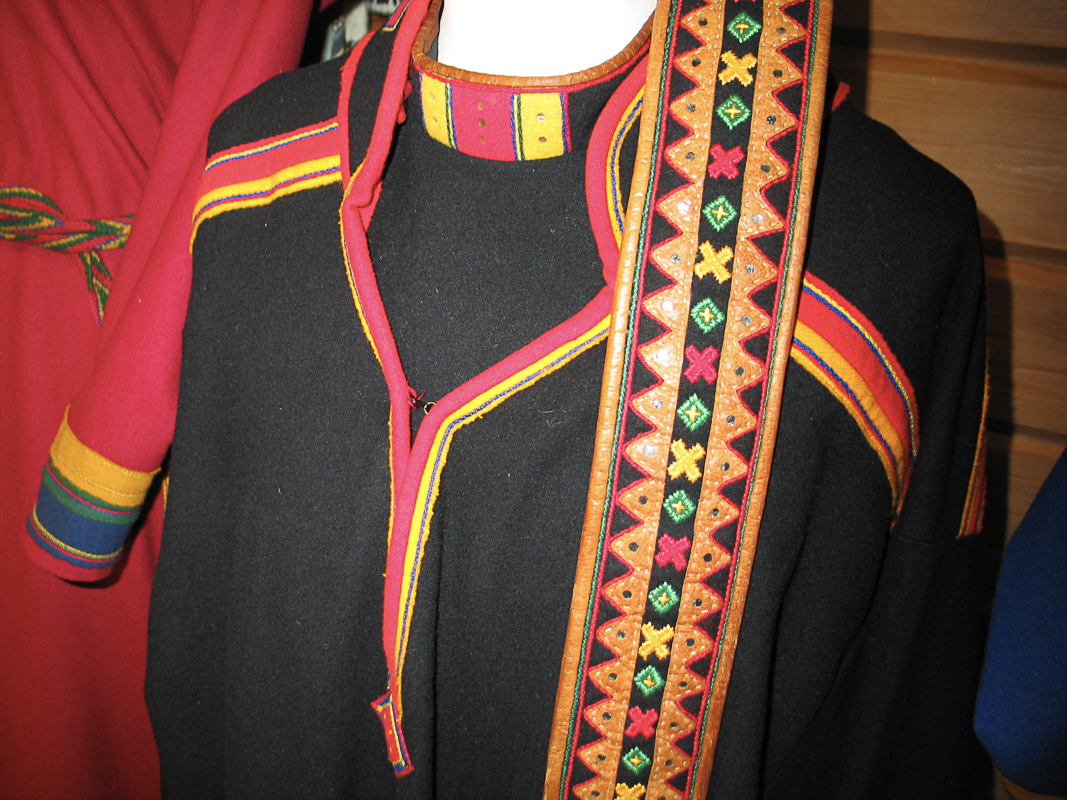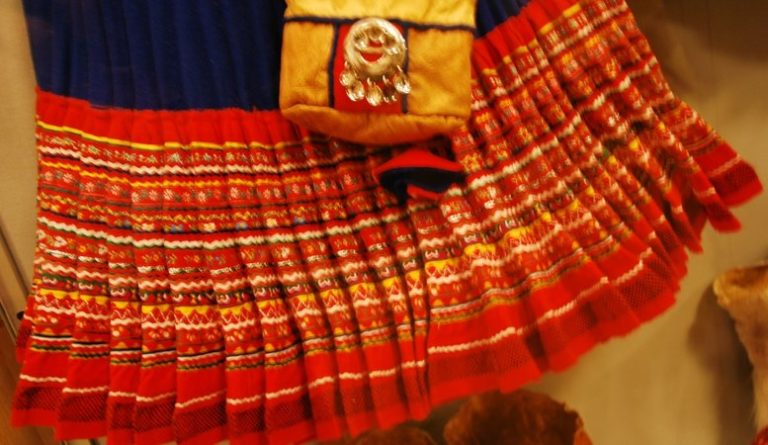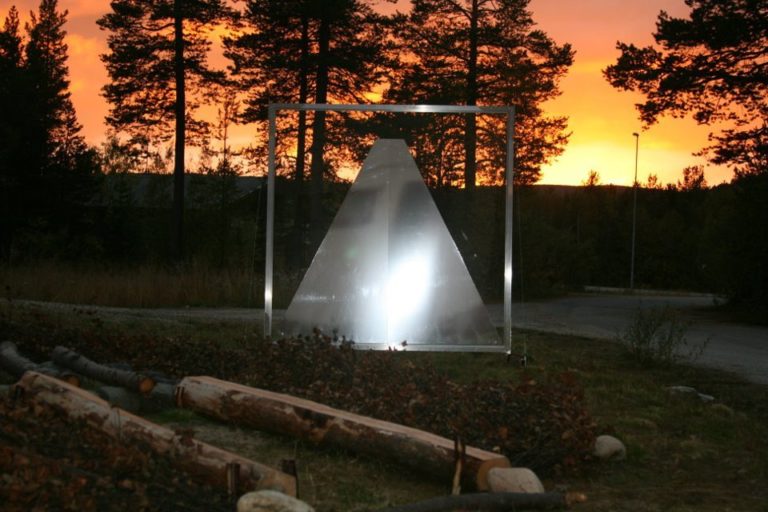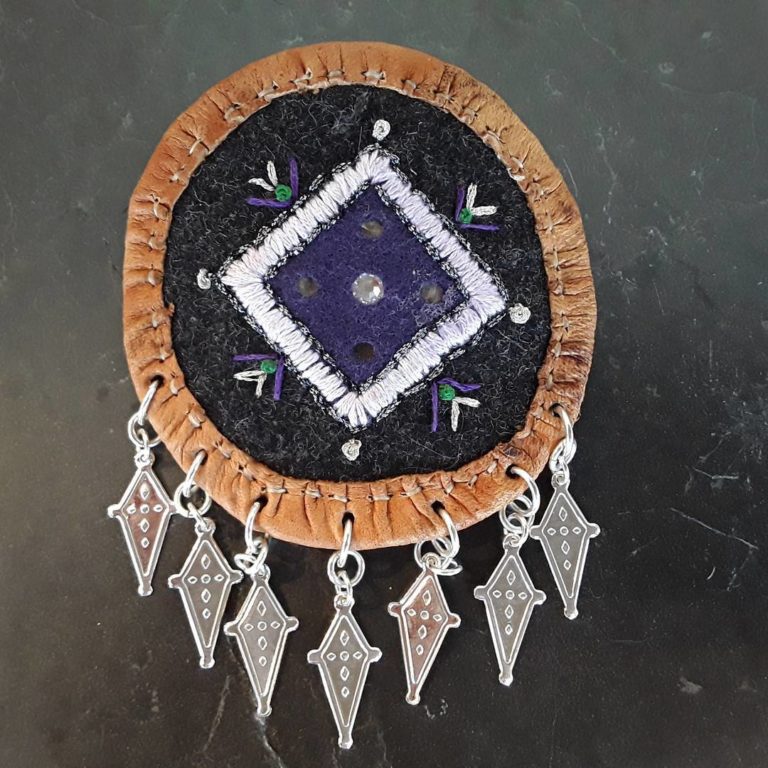The Sami people live in four countries: Norway, Sweden, Finland, and Russia. The total population in these four countries is estimated at approx. 80,000, of whom around half live in Norway. Slightly under half of these people talk Sami. I Norway, the Sami people in Norway live in almost all parts of Northern Norway, and in the southern parts of the country in Trøndelag and Femundsmarka in Hedmark.
The Sami languages are very different from Norwegian
The Sami people speak languages that is a member of the Uralic linguistic group along with languages such as Finnish, Estonian and Hungarian. Norwegian and other Indo-European languages – almost all Europeans speak a Indo-European langauge – are not related to the Sami’s tongue.
Nine languages constitute one Sami people
A total of nine distinct but closely related Sami languages are spoken in the Sami region. Today, three of these languages are in active use in Northern Norway. Sami people from the south of Northern Norway can talk effortlessly to their nearest Sami neighbours in Sweden, but cannot communicate with Sami people from the far north. The dialect boundaries do not follow the national borders, however, as most of the Sami languages are spoken in multiple countries.
The Northern Sami language is currently the major language in inner Finnmark and is also used in small communities in most parts of Northern Norway as well as in some environments in the Northern Norwegian towns. It is extensively used in press, litterature, theatre film and TV.
Lule Sami is spoken along the Divtasvuotna/Tysfjord in a cluster of close-knit communities. Southern Sami is spoken from the Arctic Circle down to Central Norway. Both languages are taught in schools and kindergardens – but their use in medias, literature and art is limited.
Reindeer herding is a Sami way of life
Around 2,600 Sami people in Norway make their living from herding reindeer, and the majority of the region of Northern Norway is actually used for raising reindeer. Traditionally, the reindeer herding Sami would stay inland in the winter and move their reindeer to the coast in spring, in order to maximize grazing for the reindeer. This pattern continues in the far north, but is modified further south.
Not all Sami are reindeer herders
Traditionally, most Sami people supported themselves through a combination of fishing, livestock farming, and hunting, along the coast, in the fjords, and along the large rivers farther inland. Work and food supply followed a fixed annual cycle, varying with the available resources.
From early on, they were in close contact with Norwegians and Kvens/Finns who settled from the eighteenth century onwards, with a high degree of cultural and economic exchange between the groups. Fishing and farming remain important to Sami living in rural areas, albeit in modernised forms.
You can be Sami and work in an office
Today, a large proportion of the Sami people live outside the traditional Sami areas and have moved into the towns of Northern Norway or to the Oslo area. Even more, they still live in traditional Sami settlement areas but earn their living in the modern service sector, industry, travel and the public sector.
The Joik is a unique Sami attribute
Sami culture has many unique forms of expression. Joik, one of the oldest song traditions in Europe, is alive and well. A joik is dedicated to a person, an animal or a place, and the harmonies reproduce the qualities of the object of the song. If you would like to chat someone up, try “joiking” him/her – it has quite an effect!
The Sami are intricate designers of fashion and crafts
The “gákti”, traditional Sami clothing, is another unbroken, living tradition, but mostly used when dressing up for celebrations or parties. In contrast to what “the national costume police” may say, there is nothing wrong with going your own way, and the “gákti” follows fluctuations in fashion.
Duoddji is the Sami word for “craft”, and many traditions of craftsmanship such as tin embroidery, pearl embroidery, weaving shoelaces, jacket seams, wood carving, and knife-making are assiduously maintained. Sami boots filled with blister sedge will keep your legs warmer than the latest developments in survival equipment and are used diligently when the temperature drops below -40.
John Savio – a Sami art pioneer
The 21st Century has brought in a new era for the Sami
In the twenty-first century, Sami culture is meeting the modern world in a new way. No Sami people live a completely traditional life today, and the everyday lives of many of these indigenous people appear very modern indeed.
At the same time, however, interest in joik, duoddji and the languages themselves is increasing rapidly. Traditional joik is being blended with modern rhythms. The Sami National Theatre Beaivas, rich production of literature, Sami media and broadcasting are all using the Sami languages in new fora. This indicates that there is hope for the survival of the languages and culture.
The Sami parliament
The Sami Parliament is situated in the village of Karasjok in Finnmark, and visitors might join a guided tour in the symbolic, and architecturally interesting building. The Sami Parliament was first opened in 1989, and the democratically elected parliament deals with all matters concerning the Sami people.
Frequently asked questions
Nine languages are spoken throughout the Sami area, only three of which are spoken in Norway. Northern Sami is the most widely spoken, and is found all across Troms and Finnmark County, as well as in northernmost Nordland and in adjacent areas of Sweden and Finland. Lule Sami is spoken in Tysfjord in Norway, and in the Jokkmokk area of Sweden. South of Mo i Rana and all the way down to Lake Femunden in Southern Norway, Southern Sami spoken by some. Ume Sami is spoken along the Ume River in Sweden, and Pite Sami is spoken along the Pite River. Both were previously spoken in parts of Nordland county in Norway, and both are extremely endangered. Skolt Sami is spoken in northeasternmost Finland, and was previously spoken in the Kirkenes area of Norway and in Russia’s border areas. Inari Sami is spoken around Lake Inari in Finland. Kildin Sami is the main language on the Kola Peninsula of Russia, but a handfull can also speak Ter Sami.
The Sami had their own pre-Christian shamanistic religion. From the late Middle Ages onwards, Christian missionaries were active in the Sami area. From Norway and Sweden/Finland, first Catholic and from the 16th C. onwards Lutheran missionares were sent into the Sami area. The Dano-Norwegian missionary Thomas von Westen zealously uprooted the old religion in the early 18th C. In the 16th C., Russian Orthodox monks converted the Sami in Russia and the Norwegian and Finnish borderlands to Eastern Orthodoxy. In the 19th C, the Swedish Sami minister, Lars Levi Laestadius, inspired a strong religious movement which is still followed by many Sami people in the Lutheran part of the Sami area. The old shamanism today enjoys a renaissance in some circles.
The words Lap and Lapland have never been used by the Sami themselves. This word was only used by the neighbouring peoples of the Swedes, Norwegians and Finns. Often, but not always, it was seen as a derogatory term. As the Sami language and culture receive more respect and recognition, the words Sami (for the people) and Sápmi (for the land) are more frequently in use in English and all other languages. We recommend the terms Sami and Sápmi over Lap and Lapland.
Confusingly, the Sami were traditionally called Finns in Northern Norway. The ethnic Finns from Finland, on the other hand, were called Kven. The usage of Finn actually goes back to Roman times, and the “Finns” are mentioned in old Norse poetry and Icelandic sagas. Even today you sometimes hear it, often in a derogatery way. Again we recommend the term Sami.
Sami is the name of the people, sometimes spelled Sàmi or Saami in English. Sápmi is the original homeland of the Sami people. The Sami á is pronounced more or less like the English a.
